The Laval Nozzle Technique

Measuring low temperature kinetics in the pulsed de Laval nozzle apparatus with the Pump Laser Photolysis-Laser Induced Fluorescence (PLP-LIF) technique
De Laval nozzle instruments have proved an ideal medium for low temperature gas kinetics. A cold gas flow is produced through a controlled, rapid, adiabatic expansion of high-pressure gas through a nozzle into a vacuum chamber during which there are sufficient collisions to produce a cold, thermally equilibrated flow of gas. The final temperature of the gas flow depends on the ratio of the area the throat of the nozzle to the area of the exit of the nozzle as well as the ratio of the heat capacity of the gas at constant pressure to the heat capacity of the gas at constant volume. If the ratio of the throat area to the exit area is small, the gas flow temperature is lower and the velocity of the gas flow is larger (Expressed as Mach number=ratio of the gas flow velocity to the average speed of sound).
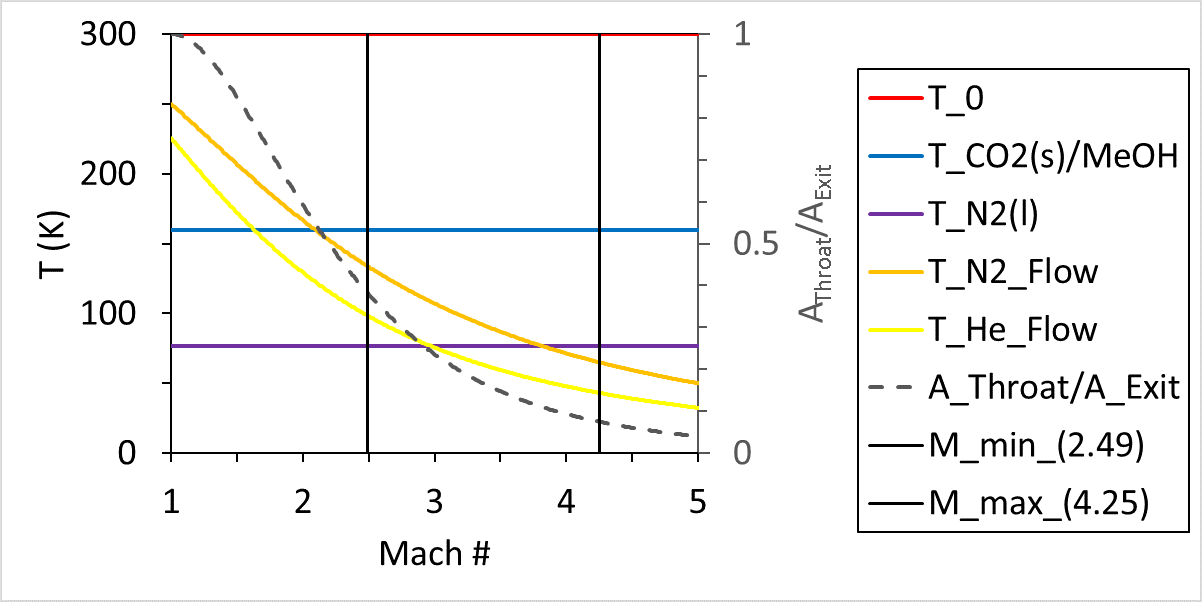 Above: The plot shows the relationship between the ratio of the throat area to the exit area of the de Laval nozzle and the Mach number. The plot also shows the relationship between the Mach number and the flow temperature for N2 (orange curve) and He (yellow curve) gas flows starting at 300 K (red curve) before gas expansion through the nozzle. For reference, temperatures achieved by dry ice/methanol (blue curve) and liquid nitrogen (purple curve) baths are also shown. Additionally, the minimum and maximum Mach numbers achieved in the Heard group pulsed de Laval apparatus are shown (black curves)
Above: The plot shows the relationship between the ratio of the throat area to the exit area of the de Laval nozzle and the Mach number. The plot also shows the relationship between the Mach number and the flow temperature for N2 (orange curve) and He (yellow curve) gas flows starting at 300 K (red curve) before gas expansion through the nozzle. For reference, temperatures achieved by dry ice/methanol (blue curve) and liquid nitrogen (purple curve) baths are also shown. Additionally, the minimum and maximum Mach numbers achieved in the Heard group pulsed de Laval apparatus are shown (black curves)
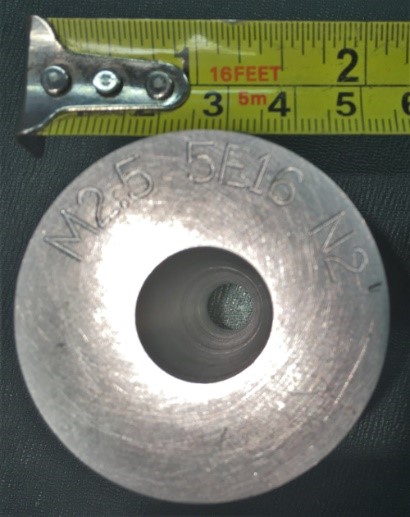

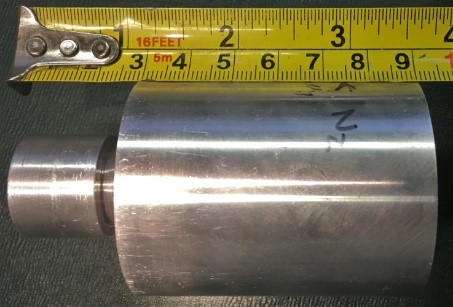
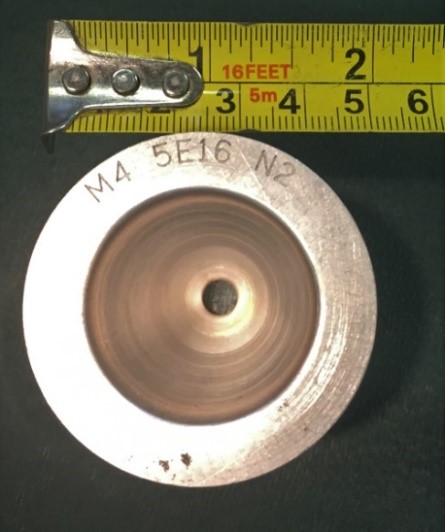 Above: Photos of two nozzles of differing Mach number from the University of Leeds.
Above: Photos of two nozzles of differing Mach number from the University of Leeds.
In order to measure gas kinetics in the de Laval nozzle apparatus, reactions are initiated by PLP of a reagent precursor. Then, reactant(s) or product(s) are probed via LIF at varying pump-probe time delays in order to measure the relative loss rate of a reagent or growth rate of a product.
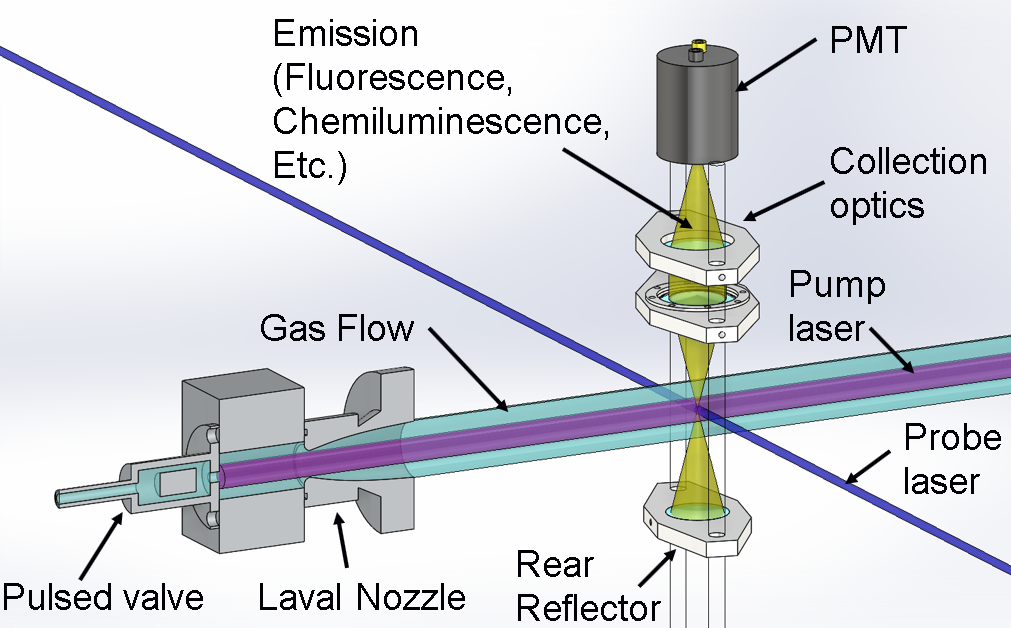 Above: A “cartoon” schematic diagram of a pulsed de Laval nozzle incorporating the PLP-LIF technique.
Above: A “cartoon” schematic diagram of a pulsed de Laval nozzle incorporating the PLP-LIF technique.
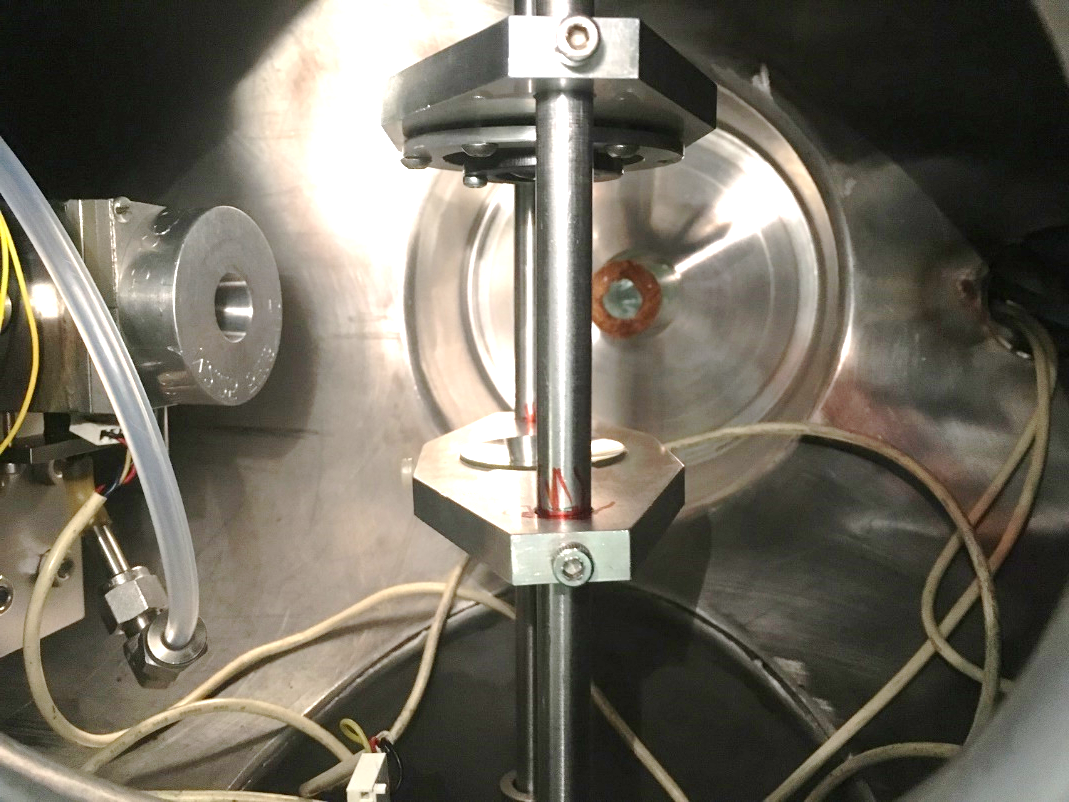 Above: Photo of the interior of the de Laval nozzle vacuum chamber.
Above: Photo of the interior of the de Laval nozzle vacuum chamber.
The pulsed operation of the Laval nozzle apparatus utilized in the Heard group allows for the efficient measurement of small amounts of gas reagents when combined with high-power, pulsed lasers via the PLP-LIF technique. It is one of the few techniques that is capable of measuring low temperature kinetics and acts as a check for theoretical low temperature kinetic data which is often off by orders of magnitude due to non-Arrhenius behavior found at low temperature that is difficult to accurately predict. For information on research performed with the de Laval PLP-LIF technique in the Heard group, see the astrochemistry research page.
Other Laval groups/info:
- Ian Sims, Etc (Université de Rennes):
https://ipr.univ-rennes1.fr/en/labastro - Leone group (UC Berkeley):
http://www.cchem.berkeley.edu/leonegrp/ - North Group (TAMU):
http://www.chem.tamu.edu/rgroup/north/aerothermochemistry.htm - Elena Jiménez (UCLM):
https://previa.uclm.es/profesorado/ejmartinez/english_index_archivos/page0006.html - CRESU technique:
https://en.wikipedia.org/wiki/Reaction_kinetics_in_uniform_supersonic_flow - De Laval Nozzle:
https://en.wikipedia.org/wiki/De_Laval_nozzle
